I’m not sure if I Costco there for I am or not, but I Costco.
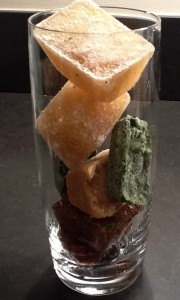
In the Costco world, things come in big bags – sometimes huge big bags. I am totally guilty of having bought the huge big bag in a moment of bargain induced euphoria, only to later find a portion of it moldering in some recess of my pantry. On more than one occasion I’ve found a significant portion of my big bag of garlic growing lovely twisty green shoots before I had gotten the chance to use it. Which made me feel not only wasteful, but as if I was somehow thwarting some portion of the garlic life cycle, committing some garlic murdering evil. All in all, the residual guilt was too much so I dropped it from my Costco shopping list.
And then, as it sometimes goes, I had bunches of cooking to do which involved bunches of garlic and needed the Costco-size bag. But there was still extra. So I looked at all the garlic I was going to have left over and had one of those moments (food gods bathed my kitchen in heavenly light, garlic sprites danced in the twighlight) and thought “why don’t I roast it?” So I put half the garlic into the oven and roasted it off.
Which comes to the point of this post. In the vein of when life gives you lemons… make ice cubes. Up there in the glass from the top: chicken bouillon ice cubes, roasted garlic ice cubes, basil ice cubes and coffee ice cubes. They are just don’t waste it … ice cubes. Please check before plopping an ice cube into your drink, roasted garlic water is nasty.
The basic idea is to put left-over bit is into an ice cube tray so you have another ingredient on hand. Cover the ice cube tray with plastic wrap and place in the freezer until frozen solid. Crack the ice cubes into a labeled zip lock freezer bag (put a date on it while you are at it) and now you have little bits of magic in your freezer. Don’t want to dilute your iced coffee? Use coffee ice cubes. Out of fresh basil? Use a basil cube. Need just a bit of chicken stock? Use a stock cube. Need a little nutty richness in a sauce, a little extra something in the mashed potatoes? Toss in a roasted garlic cube. Cilantro, pesto, left over wine (not a lot of that in my house) and tomato paste are all good candidates for ice cube preservation. But in case you have the big bag of garlic hanging around here’s how I go about it.
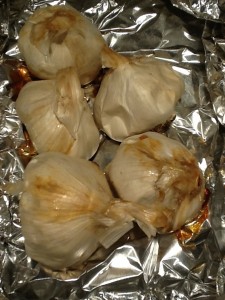
Roasted Garlic
Yield 5 or 6 ice cubes
5 whole heads of garlic
5 Tablespoons (60 mL) water – 1 Tablespoon (15 mL) per head of garlic
Foil
If you want to save some for the freezer, start with at least 3 or 4 heads of garlic, but you can easily do more.
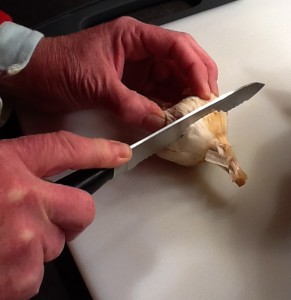
- Preheat oven to 375° (190° C).
- Lay a sheet of foil on a baking sheet. It needs to be large enough to enclose the garlic loosely, and still leave room for a double folded seam on the top and edges.
- Place the garlic in the center of the sheet and make a package, with a double fold at the top and at one end, leaving one end open.
- Add the water to the package and seal up the remaining end with another double fold.Place in the oven and roast for 45 minutes – 1 hour. It will depend how many heads of garlic you have, an
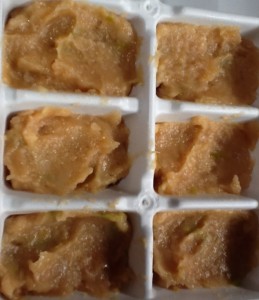 d how hot your oven is. Check at 45 minutes and give the garlic as squeeze. If it doesn’t feel soft, return it to the oven and roast until the heads of garlic yield easily to a gentle squeeze. (Lay a towel over the foil to protect your hands from the heat.)
d how hot your oven is. Check at 45 minutes and give the garlic as squeeze. If it doesn’t feel soft, return it to the oven and roast until the heads of garlic yield easily to a gentle squeeze. (Lay a towel over the foil to protect your hands from the heat.)
- When the garlic is soft, remove from the oven and allow to cool until luke warm to the touch.
- Remove the garlic from the foil packet. With a sharp knife slice the top off the garlic heads. Squeeze the roasted garlic into a small bowl. Mash with a fork until it is an even consistency. Use within a day or two or pack into an ice cube tray, cover with plastic wrap and freeze.
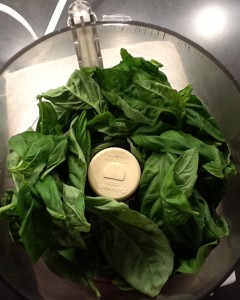
Basil Ice Cubes
Yield 3-4 ice cubes
2 oz. (57 g) Fresh Basil Leaves,washed and thoroughly dried
4 teaspoons – 2 tablespoons good olive oil
- Place basil leaves in a food processor
- Pulse until the basil leaves are coarsely chopped.
- Add olive oil, a little at a time, to make a smooth paste, scraping down the
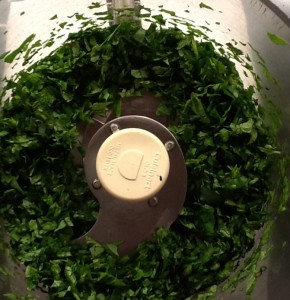 sides as you go. How much oil you need will depend upon how much basil you are trying to preserve. You need just enough oil to make it “go,”add the oil a teaspoon or two at a time so you don’t over do it. The puree should be thick and pasty, not saucy.
sides as you go. How much oil you need will depend upon how much basil you are trying to preserve. You need just enough oil to make it “go,”add the oil a teaspoon or two at a time so you don’t over do it. The puree should be thick and pasty, not saucy.
- Use immediately or pack into an ice cube tray. Press plastic wrap onto the surface of the basil puree and freeze until solid.
Note: Basil can be washed and dried in a salad spinner. Then laid out on paper
towels on a plate or sheet tray in the refrigerator for a few hours to dry completely.
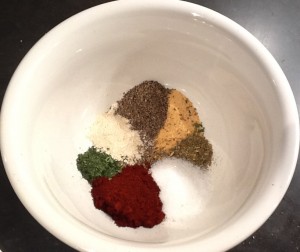
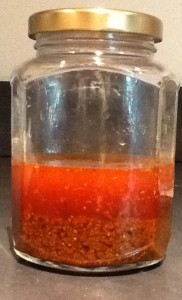 1/2 cup corn oil
1/2 cup corn oil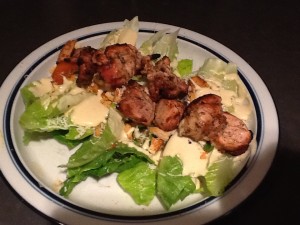



 d how hot your oven is. Check at 45 minutes and give the garlic as squeeze. If it doesn’t feel soft, return it to the oven and roast until the heads of garlic yield easily to a gentle squeeze. (Lay a towel over the foil to protect your hands from the heat.)
d how hot your oven is. Check at 45 minutes and give the garlic as squeeze. If it doesn’t feel soft, return it to the oven and roast until the heads of garlic yield easily to a gentle squeeze. (Lay a towel over the foil to protect your hands from the heat.)
 sides as you go. How much oil you need will depend upon how much basil you are trying to preserve. You need just enough oil to make it “go,”add the oil a teaspoon or two at a time so you don’t over do it. The puree should be thick and pasty, not saucy.
sides as you go. How much oil you need will depend upon how much basil you are trying to preserve. You need just enough oil to make it “go,”add the oil a teaspoon or two at a time so you don’t over do it. The puree should be thick and pasty, not saucy.